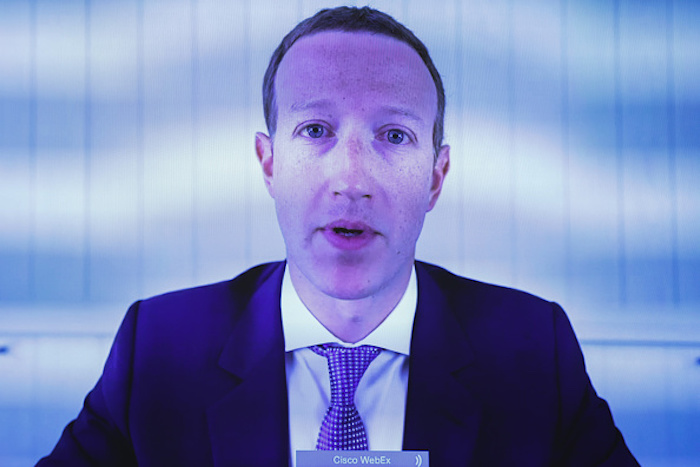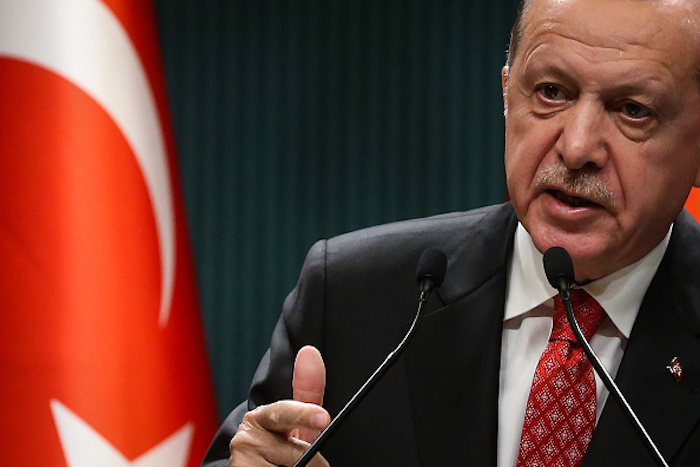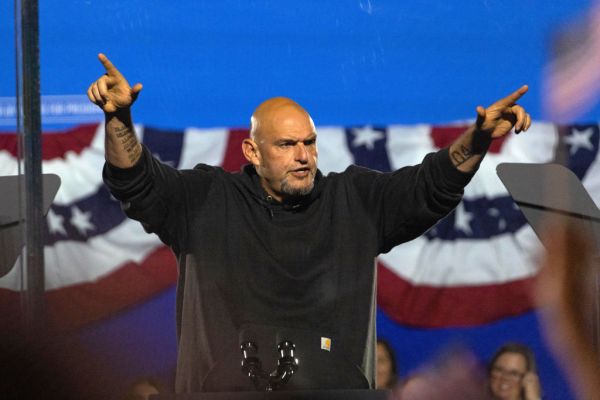What happened on Wednesday

What’s new: On Wednesday, the CEOs of Amazon, Apple, Facebook, and Google testified before the House Judiciary Committee’s subcommittee on antitrust.
Why this matters: Bipartisan concerns about “big tech” are driving a host of legislative, legal, and political actions and this week’s hearing highlighted them all.
Key points:
Jeff Bezos, Tim Cook, Mark Zuckerberg, and Sundar Pichai spent more than five hours answering questions.
Republicans, as anticipated, largely focused their questions around perceptions of anti-conservative bias.
Democrats largely focused on the companies’ business models and perceptions of monopolistic practices.
Both sides of the aisle cast these companies as too big, too powerful, and too unaccountable.
The CEOs, while occasionally pushing back on some characterizations, largely just took it and exited the hearing without taking significant damage.
Go deeper:
Amazon was frequently asked about its reported use of internal metrics to unfairly advantage its products while constraining third-party sellers.
Apple was challenged on its control over its app store and over the fees it charges app developers.
Facebook was pressed on its acquisition of WhatsApp and Instagram, with Democrats using quotes from company emails to assert the social network clearly sought to head-off potential rivals.
Google had to explain its 2007 acquisition of the online marketing company DoubleClick as well as the company’s ongoing use of user data for ad targeting.
All of them were accused of controlling information, surveilling users and competitors, and generally abusing their power.
What we’re thinking: The companies appear to have avoided major mistakes, but some of the questions received surprising admissions that will undoubtedly be used by regulators currently conducting investigations. Look for charges of online bias and anti-competitive behavior to continue featuring prominently in the 2020 presidential election cycle and to be a key legislative priority in the new year.
Deep Dive: China in 2050

What’s new: A new RAND study asks, “How successful might China be at implementing its grand strategy goals by 2050?” and “What will U.S.-China relations look like by 2050?”
Why this matters: US-China relations are complex and high-stakes. There are a lot of changes that need to occur, but there are just as many mistakes that are possible. Studies like this help to organize and frame the challenge.
Go deeper:
The report analyzes four different scenarios that are possible in the next 30 years — triumphant China, ascendant China, stagnant China, and imploding China.
“A triumphant China is least likely because such an outcome presumes little margin for error and the absence of any major crisis or serious setback between now and 2050.”
“An imploding China is not likely because, to date, Chinese leaders have proved skilled at organizing and planning, adept at surmounting crises, and deft at adapting and adjusting to changing conditions.”
“By 2050, China most likely will have experienced some mixture of successes and failures, and the most plausible scenarios would be an ascendant China or a stagnant China. In the former scenario, China will be largely successful in achieving its long-term goals, while, in the latter scenario, China will confront major challenges and will be mostly unsuccessful in implementing its grand strategy.”
The authors go on to explain how these scenarios could shape US-China relations in three different ways — parallel partners, colliding competitors, or diverging directions.
“The parallel partners trajectory is a continuation of the state of U.S.-China relations in 2018. This trajectory is most likely to occur with a stagnant China and probably an ascending China.”
“The colliding competitors trajectory is most likely to manifest in a triumphant China scenario in which Beijing becomes more confident and assertive.”
“The diverging directions trajectory is most likely to occur in an imploding China scenario because Beijing will be preoccupied with mounting domestic problems.”
Finally, the report offers a series of policy recommendations, largely for US military planning.
“The likely scenarios call for greater attention to improving joint force capabilities and preparing to operate with much longer logistics tails. For the U.S. Army, this means efforts to optimize key units and capabilities for available airlift and sealift to get soldiers to the fight quickly or to a hot spot before the fight breaks out.”
“Because China probably will be able to contest all domains of conflict across the broad swath of the region by the mid-2030s, the U.S. Army, as part of the joint force, will need to be able to respond immediately to crises or contingencies at various points of contention. To be inside the wire at the outset of a crisis or conflict will require a combination of forward-based forces, light and mobile expeditionary forces, and interoperable allied forces.”
“The U.S. Army and allied forces must also develop and train on concepts to reinforce conventional extended deterrence and keep competition from becoming conflict.”
“The ability of highly capable, responsive, and resilient maritime and air forces to quickly and effectively suppress China’s burgeoning reconnaissance-strike system, along with specific special operations and Army capabilities, will largely determine the extent to which China’s leadership remains risk averse when considering military options to resolve regional disputes.”
What we’re thinking: The US will either get China policy right or lots of things are going to go very, very wrong.
The four scenarios laid out in the report — and their assessed likelihood — make sense and offer a helpful framework for considering the strategic challenge. The recommendations are also coherent and provide specific actions that are prudent and much needed. But there are broader strategic considerations — admittedly beyond the scope of this report — that need to be understood and addressed immediately.
Specifically, we recommend Heritage’s blueprint for confronting China and our data-driven assessment of Beijing’s growing military capacity.
Clock is ticking on TikTok

What’s new: Treasury Secretary Mnuchin says his department will soon give the White House its assessment of whether the Chinese social media app TikTok poses a national security threat to the United States, according to The Wall Street Journal (paywall).
Why this matters: Cybersecurity and national security experts warn that the app allows China’s government access to US user data, which can be used to target them or other American interests.
Key points:
TikTok’s spreading of Chinese propaganda, its suppression of political dissent against the Chinese Communist Party, and its legal reporting requirements to China’s security services, are well-documented and not seriously debated.
Treasury’s review is being handled by the Committee on Foreign Investment in the United States (CFIUS) and is specifically looking at the acquisition of another video sharing app by TikTok’s parent company, ByteDance.
TikTok’s CEO Kevin Mayer responded this week by publishing a blog post that charges American rivals with copying his company’s features and pushing back on claims of espionage, promising, “For our skeptics, I am confident we have the answers and where we do not, we will improve.”
What we’re thinking: How the US can best respond to TikTok is debatable, the threat posed by the app (and by other Chinese companies) is not. I (Klon) recently participated in a debate on this subject and you can watch that debate here.
Turkey’s new law targets social media

What’s new: Turkey has given its government sweeping authorities to monitor and to regulate social media, according to The New York Times.
Why this matters: Human rights and free speech advocates are concerned the new powers will constrain one of the few remaining spaces for public debate in the increasingly authoritarian nation.
Key points:
Social media companies with more than one million daily users — like Facebook, Twitter, and YouTube — are now required to have offices in Turkey and will be hit with stiff penalties if they refuse.
These offices will be responsible for complying with government demands for data and for removing content deemed offensive within 48 hours.
The law is effective October 1 and also requires all Turkish data be held on servers in Turkey.
What we’re thinking:SplinterNet is here and this type of digitized control will be a defining feature of techno-totalitarian regimes for the foreseeable future.
Ghostwriter pushing propaganda

What’s new:Wired magazine has a new report on how online propagandists broke into Eastern European media to spread missinformation about NATO.
Why this matters: The disinformation group, who security researchers call “Ghostwriter,” has been pushing fake news since at least March 2017 and appears focused on eroding support for NATO and US troops in Poland and the Baltics.
Key points:
This week, cybersecurity firm FireEye released a report on Ghostwriter, saying the group had hacked the content management systems of several European news outlets and placed its own doctored emails, social media, and op-eds.
“They’re spreading these stories that NATO is a danger, that they resent the locals, that they’re infected, that they’re car thieves,” says John Hultquist, director of FireEye’s intelligence unit. “These stories are suddenly bona fide by the sites that they’re on, and then they go in and spread the link to the story.”
Most recently, the planted stories are stoking fears around COVID-19, with one story saying that the first case in Lithuania was from a US soldier who “visited public places and participated in city events with child and youth participation.”
What we’re thinking: Ghostwriter has not been formally linked to Russia. (Narrator: Everyone knows it’s Russia.)
Tech leads in “upskilling” workforce

What’s new: In his article over at Forbes.com, Daniel Newman makes the case that tech companies are leading the charge when it comes to investing in the workforce of the future.
Why this matters: Last year, 80% of polled CEOs said they were concerned about workplace skills gaps — up from 56% in 2011.
Key points:
Amazon is committing $700 million for re-skilling and up-skilling, promising to include support for tuition and curriculum redevelopment, technical programs, and e-learning certifications.
Salesforce is pledging to up-skill half a million Americans free of charge. Workers in any discipline can access the company’s Trailhead training platform to learn necessary skills for the modern market.
Google has already trained over 3 million US workers, offering certificate programs and basic skills labs for students, military personnel, families, educators, and tech professionals.
Finally, Microsoft is pledging to up-skill 25 million US workers impacted by the coronavirus by the end of the year. They will combine existing and new resources from LinkedIn, GitHub and other sources to provide people with the necessary digital skills they need to either get back in the workplace or move up from their current positions.
What we’re thinking: We love it when the market identifies a need and then solves it in such a way that it helps individuals and business thrive.







Please note that we at The Dispatch hold ourselves, our work, and our commenters to a higher standard than other places on the internet. We welcome comments that foster genuine debate or discussion—including comments critical of us or our work—but responses that include ad hominem attacks on fellow Dispatch members or are intended to stoke fear and anger may be moderated.
You are currently using a limited time guest pass and do not have access to commenting. Consider subscribing to join the conversation.
With your membership, you only have the ability to comment on The Morning Dispatch articles. Consider upgrading to join the conversation everywhere.